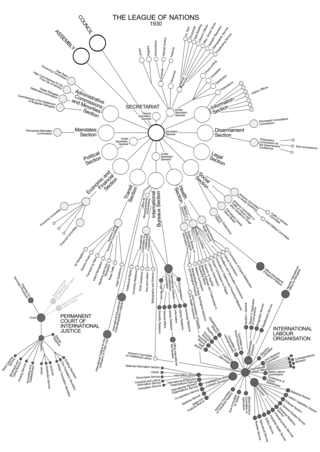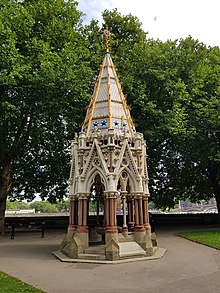
Abolitionism, or the abolitionist movement, is the movement to end slavery and liberate slaves around the world.

The Anti-Slavery Reporter was founded in London in 1825 as the Anti-Slavery Monthly Reporter by Zachary Macaulay (1768–1838), a Scottish philanthropist who devoted most of his life to the anti-slavery movement. It was also referred to as the British and Foreign Anti-Slavery Reporter, and in 1909 merged with the Aborigines' Friend to form the Anti-Slavery Reporter and Aborigines' Friend. From 1981 the journal was again renamed the Anti-Slavery Reporter, and as a publication of Anti-Slavery International continued to be published occasionally as simply Reporter.

The Society for the Mitigation and Gradual Abolition of Slavery Throughout the British Dominions, founded in 1823 and known as the London Anti-Slavery Society during 1838 before ceasing to exist in that year, was commonly referred to as the Anti-Slavery Society.

The 1926 Slavery Convention or the Convention to Suppress the Slave Trade and Slavery is an international treaty created under the auspices of the League of Nations and first signed on 25 September 1926. It was registered in League of Nations Treaty Series on 9 March 1927, the same day it went into effect. The objective of the convention is to confirm and advance the suppression of slavery and the slave trade and was extended in 1956 with the Supplementary Convention on the Abolition of Slavery, under the auspices of the United Nations.

The League of Nations was established with three main constitutional organs: the Assembly; the Council; the Permanent Secretariat. The two essential wings of the League were the Permanent Court of International Justice and the International Labour Organization.

The Supplementary Convention on the Abolition of Slavery, the full title of which is the Supplementary Convention on the Abolition of Slavery, the Slave Trade, and Institutions and Practices Similar to Slavery, is a 1956 United Nations treaty which builds upon the 1926 Slavery Convention, which is still operative and which proposed to secure the abolition of slavery and of the slave trade, and the Forced Labour Convention of 1930, which banned forced or compulsory labour, by banning debt bondage, serfdom, child marriage, servile marriage, and child servitude.

The Slave Route Project is a UNESCO initiative that was officially launched in 1994 in Ouidah, Benin. It is rooted in the mandate of the organization, which believes that ignorance or concealment of major historical events constitutes an obstacle to mutual understanding, reconciliation and cooperation among peoples. The project breaks the silence surrounding the slave trade and slavery that has affected all continents and caused great upheavals that have shaped our modern societies. In studying the causes, the modalities and the consequences of slavery and the slave trade, the project seeks to enhance the understanding of diverse histories and heritages stemming from this global tragedy.

Slavery in international law is governed by a number of treaties, conventions and declarations. Foremost among these is the Universal Declaration on Human Rights (1948) that states in Article 4: “no one should be held in slavery or servitude, slavery in all of its forms should be eliminated.”
The International Agreement for the suppression of the White Slave Traffic is a series of anti–human trafficking treaties, specifically aimed at the illegal trade of white people, the first of which was first negotiated in Paris in 1904. It was one of the first multilateral treaties to address issues of slavery and human trafficking. The convention held that human trafficking was a punishable crime and that the 12 signatories should exchange information regarding human trafficking operations.

The International Abolitionist Federation, founded in Liverpool in 1875, aimed to abolish state regulation of prostitution and fought the international traffic in women in prostitution. It was originally called the British and Continental Federation for the Abolition of Prostitution.

Slavery in Yemen was formally abolished in the 1960s. However, it has been reported that enslavement still occurred in the 21st-century.

Slavery existed in the area which was later to become Oman from antiquity until the 1970s. Oman was united with Zanzibar from the 1690s until 1856, and was a significant center of the Indian Ocean slave trade from Zanzibar in East Africa to the Arabian Peninsula and Iran, a central hub of the regional slave trade, which constituted a large part of its economy.
Beginning in the late 1800s, there were a number of attempts to abolish the mui tsai system. Mui tsai describes Chinese girls who were purchased at a young age by affluent Chinese households to work as domestic servants, and who would later be married off or sold to brothels. The mui tsai system spread to other parts of the world through immigration and colonization, causing it to become a human rights issue in countries such as Great Britain and America.

For most of its history, Qatar practiced slavery until its abolition in 1952. Many members of the Afro-Arabian minority are descendants of the former slaves. Chattel slavery was succeeded by the Kafala system. The kafala system has been abolished in Qatar since December 2016. However, concerns still remain about workers' rights and employers retaining considerable power over workers.

Legal chattel Slavery existed in Saudi Arabia until the 1960s.

The Red Sea slave trade, sometimes known as the Islamic slave trade, Arab slave trade, or Oriental slave trade, was a slave trade across the Red Sea trafficking Africans from the African continent to slavery in the Arabian Peninsula and the Middle East from antiquity until the mid-20th-century. When other slave trade routes were stopped, the Red Sea slave trade became internationally known as a slave trade center during the interwar period. After World War II, growing international pressure eventually resulted in its final official stop.

Slavery existed in the Trucial States (1892–1971), which later formed the United Arab Emirates. The Trucial States consisted of the Sheikdoms Dubai, Abu Dhabi, Sharjah, Ajman, Umm Al Quwain, Fujairah, and Ras Al Khaimah. The region was mainly supplied with enslaved people from the Indian Ocean slave trade, but humans were also trafficked to the area from Hejaz, Oman and Persia. Slaves were used in the famous pearl fish industry and later in the oil industry, as well as sex slaves and domestic servants. Many members of the Afro-Arabian minority are descendants of the former slaves.

Open slavery existed in Kuwait until the 1940s. Slavery was formally abolished in Kuwait in 1949. In practice, slavery was not actually abolished as such, but the law no longer recognized it after 1949, which meant that every slave who applied for manumission was guaranteered to be freed. Many members of the Afro-Arabian minority are descendants of the former slaves. Slavery of people from Africa and East Asia was succeeded by the modern Kafala system of poor workers from the same region were slaves had previously been imported.

Open slavery existed in Bahrain until the 1930s. Slavery was formally abolished in Bahrain in 1937. Slavery ended earlier in Bahrain than in any other Gulf state, with the exception of Iran and Iraq. Many members of the Afro-Arabian minority are descendants of the former slaves. Slavery of people from Africa and East Asia was succeeded by the modern Kafala system of poor workers from the same region were slaves had previously been imported.









